DP Eric Steelberg ASC captures the backstage madness for Jason Reitman's comedy 'Saturday Night' using KODAK 16mm film
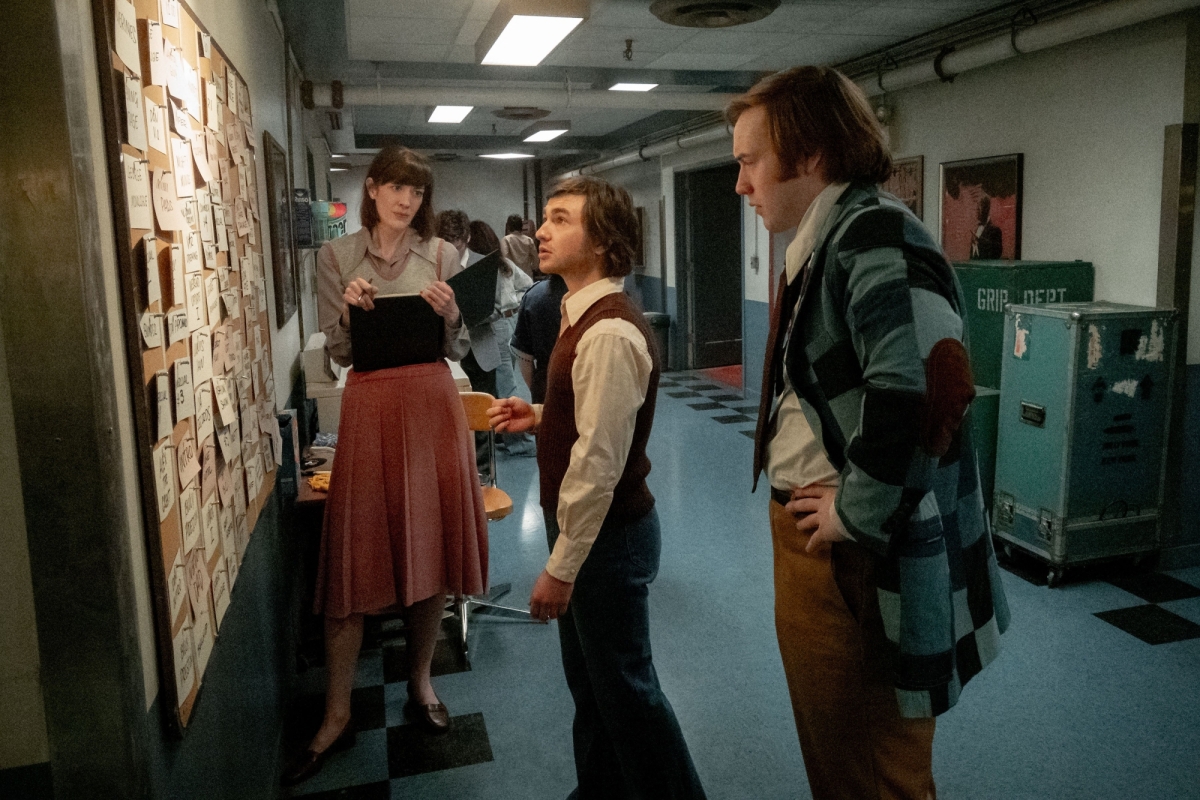
Audrey Dickman (Kirsty Woodward), Lorne Michaels (Gabriel LaBelle) and Dick Ebersol (Cooper Hoffman) in Columbia Pictures' SATURDAY NIGHT, directed by Jason Reitman. Photo Hopper Stone. © 2024 CTMG, Inc/Sony Pictures Entertainment. All Rights Reserved.
At 11:30 p.m. on October 11, 1975, a troupe of ferocious young comedians and writers changed television forever when the first broadcast of satirical sketch show 'Saturday Night Live' (SNL) hit the airwaves from NBC's Studio 8H at 30 Rockefeller Plaza, Midtown Manhattan, New York City.
Shot on KODAK 16mm film by DP Eric Steelberg ASC, director Jason Reitman's movie, entitled Saturday Night, transports audiences back in time and follows SNL's ambitious 30-year-old showrunner, Lorne Michaels, as he deals with a tense and crazy melee of egos, expectations and general unreadiness in the 90-minutes before showtime. The film's opening 3.5-minute single-shot sets the scene as the camera meanders through the studio space and dressing rooms, to reveal the characters and the chaos.
The film was applauded for its nostalgic celebration of one of showbiz's most auspicious debuts, and the non-stop energy of Steelberg's cinematographic efforts.
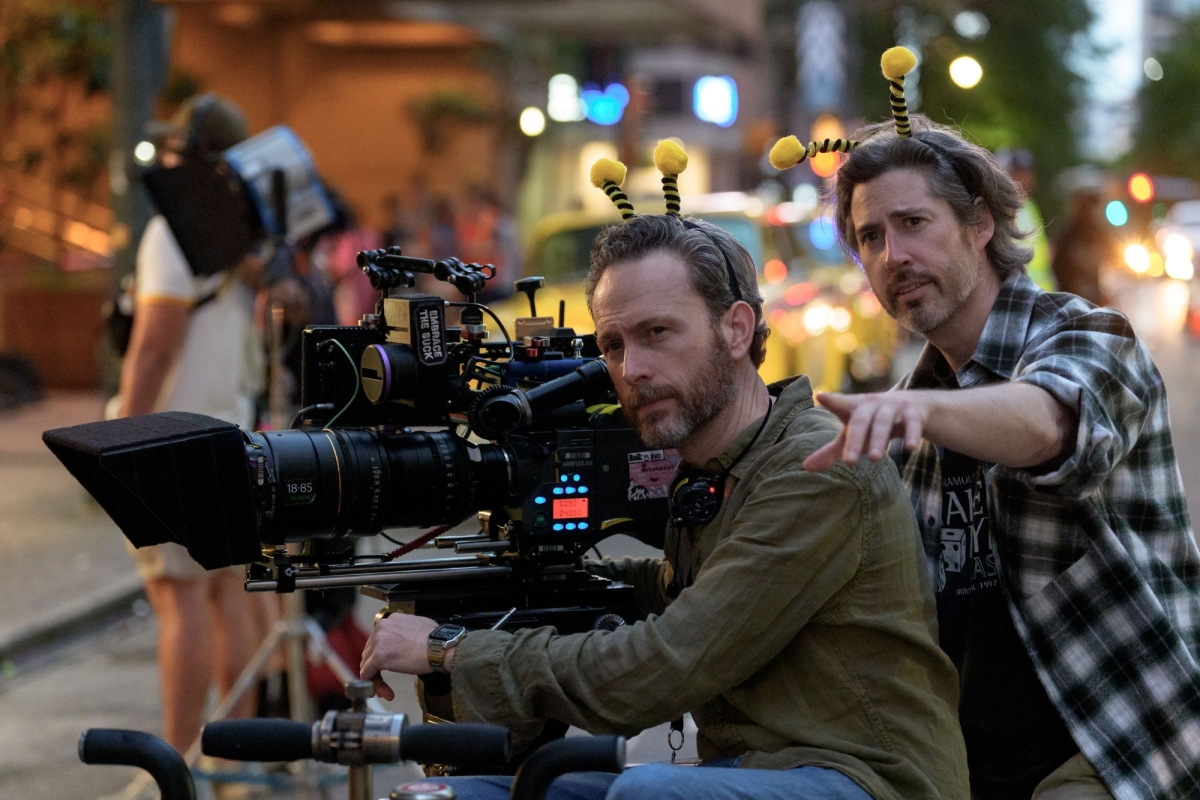
Cinematographer Eric Steelberg and Director Jason Reitman on the set of Columbia Pictures' SATURDAY NIGHT.
Steelberg and Reitman have enjoyed a lengthy collaboration and a personal friendship stretching back over more than two decades. Saturday Night is the ninth feature the pair have made together, starting with Juno (2007) and including Up in the Air (2009), plus The Front Runner (2018) – all shot on KODAK 35mm film.
“Jason and I have known each other since we were teenagers. We met on a friend's short film when we were 15,” remarks the DP. “We stayed in touch and I then started shooting the short films he was directing. We eventually got into the advertising industry and filming commercials together for many, many years before we then rolled separately into features – Jason with Thank You for Smoking (2005, DP James Whitaker), and me with Echo Park LA/Quinceañera (2006, dirs. Richard Glatzer & Wash Westmoreland). The next film that came across his desk was Juno, which he sent to me and that was that.”
Returning to the subject of Saturday Night Steelberg says, “Jason first told me about the movie as he was writing it, shortly after the start of the COVID-19 pandemic. Initially, he wanted to shoot the entire film in a single continuous take, with no stitches of any kind – one hour-and-a-half-long shot, like a play, on a specially-constructed set – with the idea of creating real-time tension as transmission time for the show approached.
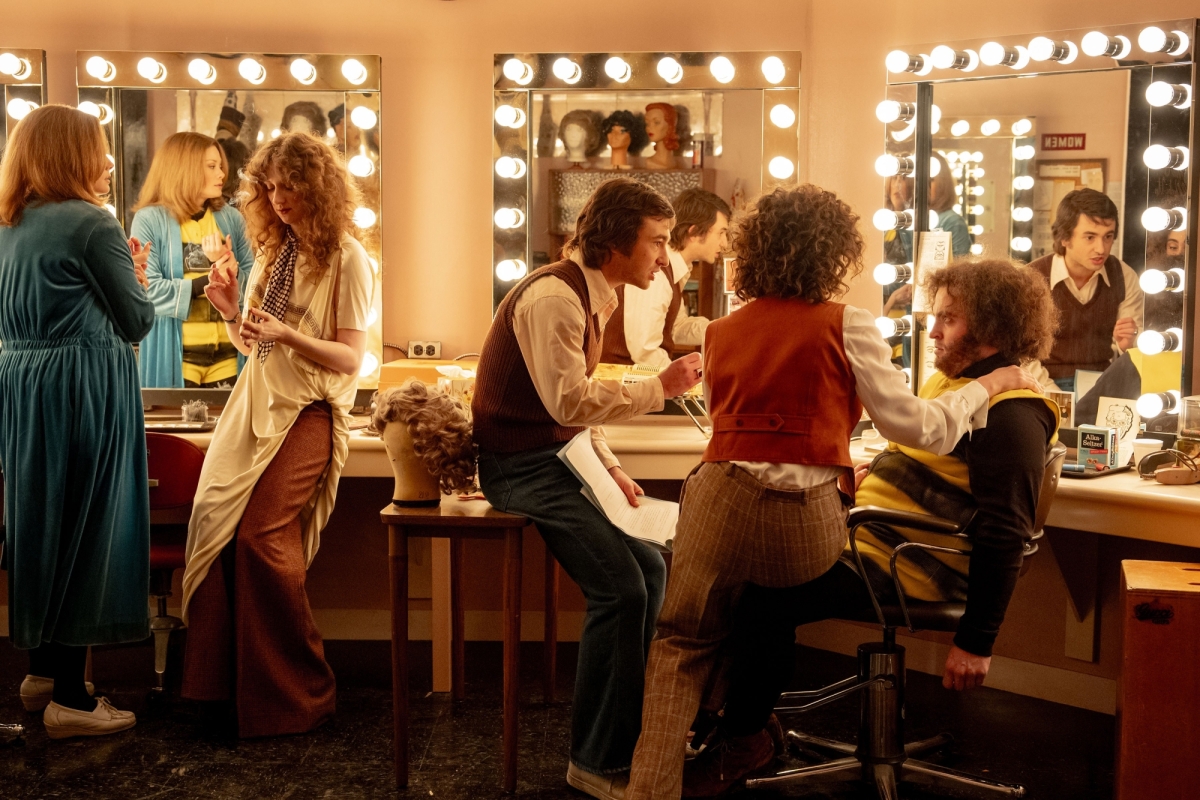
Jane Curtin (Kim Matula), Laraine Newman (Emily Fairn), Lorne Michaels (Gabriel LaBelle), Rosie Shuster (Rachel Sennott), and John Belushi (Matt Wood) in the Makeup Room in SATURDAY NIGHT, directed by Jason Reitman. Photo Hopper Stone. © 2024 CTMG, Inc/Sony Pictures Entertainment. All Rights Reserved.
“We talked a lot about how we could accomplish that technically, and it was fun to go down that road for a while during lockdown. However, over the course of time, he decided to take a more traditional approach, which included shooting on 16mm film. But even then, he still wanted it to retain that same tension in the visual storytelling by including a number of long takes. We thought that those would be a great way to take the audience beat-by-beat, minute-by-minute, through the craziness of the 90-minutes before the show went live.”
Although Steelberg shot The Front Runner on 35mm film, he recalls tests he shot for that production on 16mm film and how those came to factor into the thinking for Saturday Night.
“Looking back, Jason and I remembered the aesthetic look-and-feel that 16mm brought to the visual image – it's softness, color palette and the way it feels more alive with the grain. So, I did a bunch of comparative tests for Saturday Night on 16mm and 35mm, and we just fell in love with 16mm all over again.
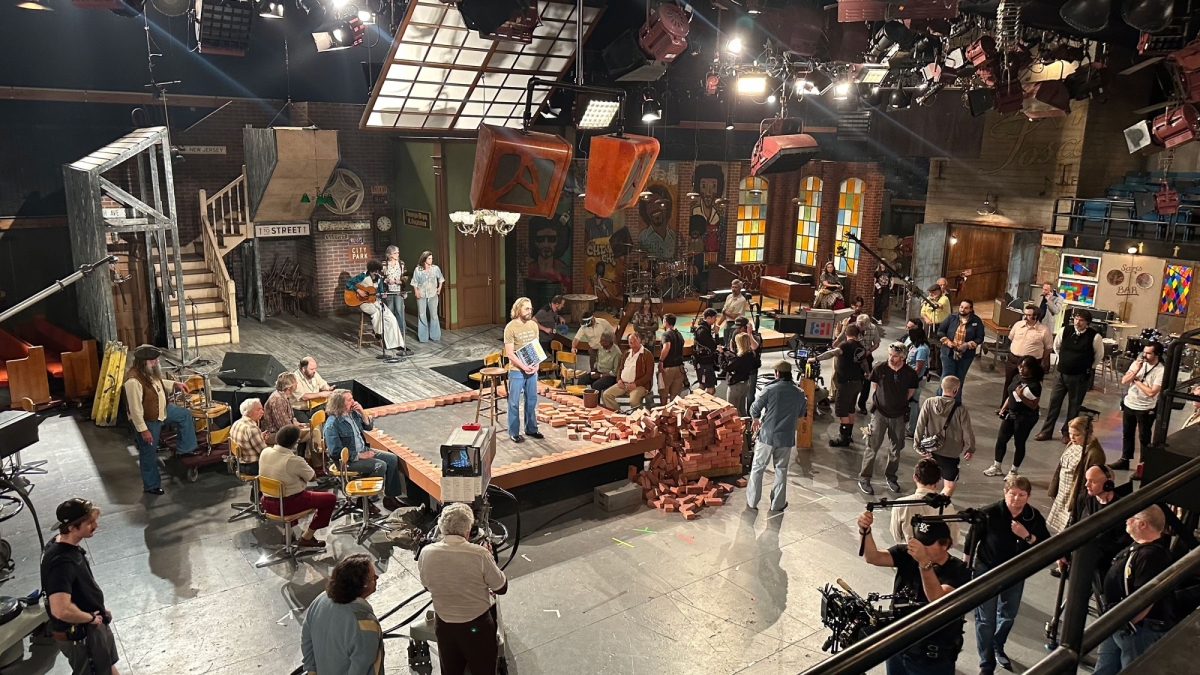
Production Set Design for Columbia Pictures' SATURDAY NIGHT. Photo Jess Goncher. © 2024 CTMG, Inc/Sony Pictures Entertainment. All Rights Reserved.
“It took some convincing of the studio executives, but Jason was insistent about 16mm film being an aesthetic choice, that 16mm film was the identity of the movie, and that only 16mm film would serve to define its period look and enhance the theatrical experience for the audience.”
Steelberg says that movies made in the 1970s, by filmmakers such as Robert Altman and Michael Ritchie, were creative touchstones for their use of a restless camera in depicting life on-the-fly, along with zooms, pans and a variety of angles. The DP and director also watched the inaugural episode of SNL and studied behind-the-scenes photography of the show's early years to understand the geography of NBC's Studio 8H and how things were lit back then, both on stage and behind-the-scenes.
Principal photography on Saturday Night began in March 2024 at Trilith Studios in Atlanta, where a double-decker, two-story set-build of the original NBC studios eighth and ninth floors was built. Exteriors for the film were shot in New York, including the ice rink at Rockefeller Plaza, before the production wrapped some 34 shooting days later in May.
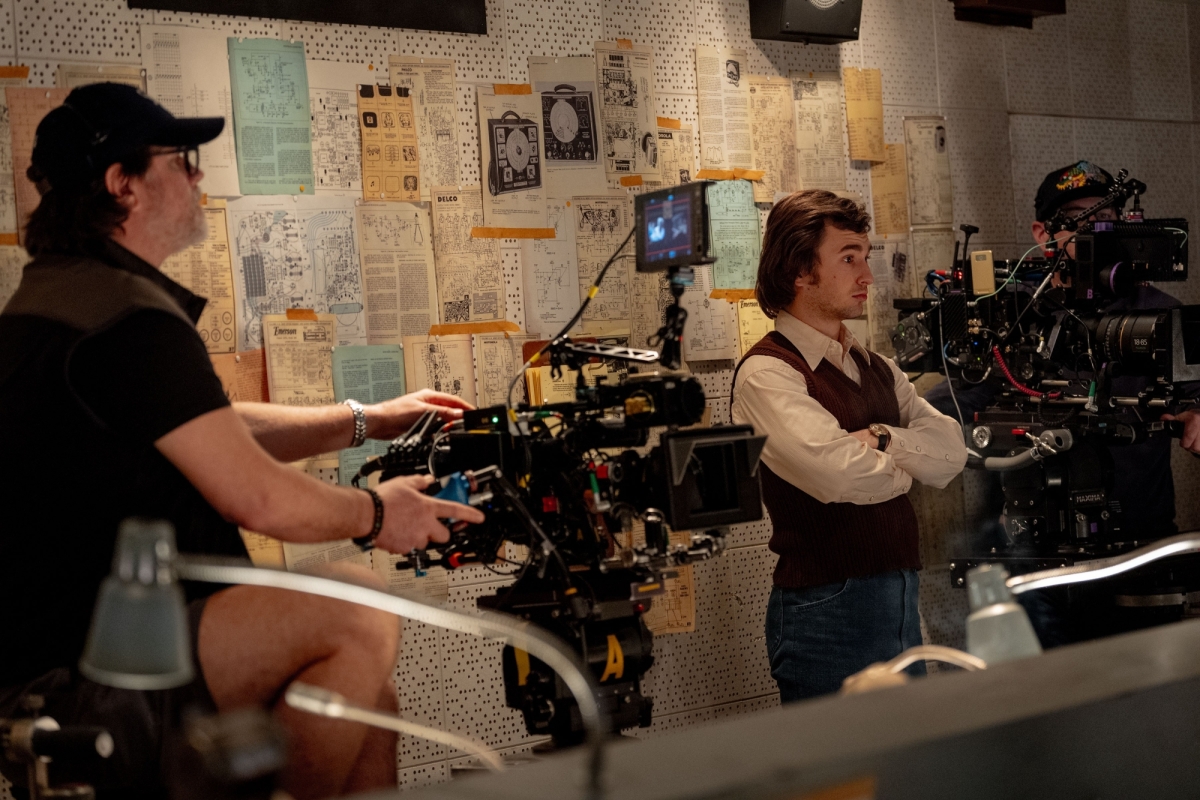
On the set of Columbia Pictures' SATURDAY NIGHT.
Steelberg went with ARRIFLEX 416 16mm cameras for the shoot, primarily using Canon 8-64mm T2.0 and Fujinon 18-85mm T2.0 Premier zoom lenses, along with ARRI Master Primes and ARRI Ultra 16 Primes.
“Modern zoom lenses are nicely sharp and allow a certain versatility during production,” says Steelberg. “We purposely brought them into the visual storytelling but also used them during whip pans to reframe where the image was going to land. Also, by not needing to do so many lens changes, zooms help to support a good pace to production.”
The DP elected to shoot Saturday Night using just one filmstock – KODAK VISION3 200T Color Negative Film 7213. Film processing and 4K scanning were done at Kodak Film Lab in Atlanta. Dailies were supervised by dailies colorist Karli Windischmann at Company 3 in Atlanta, with the final grade completed by Stefan Sonnefeld in LA.
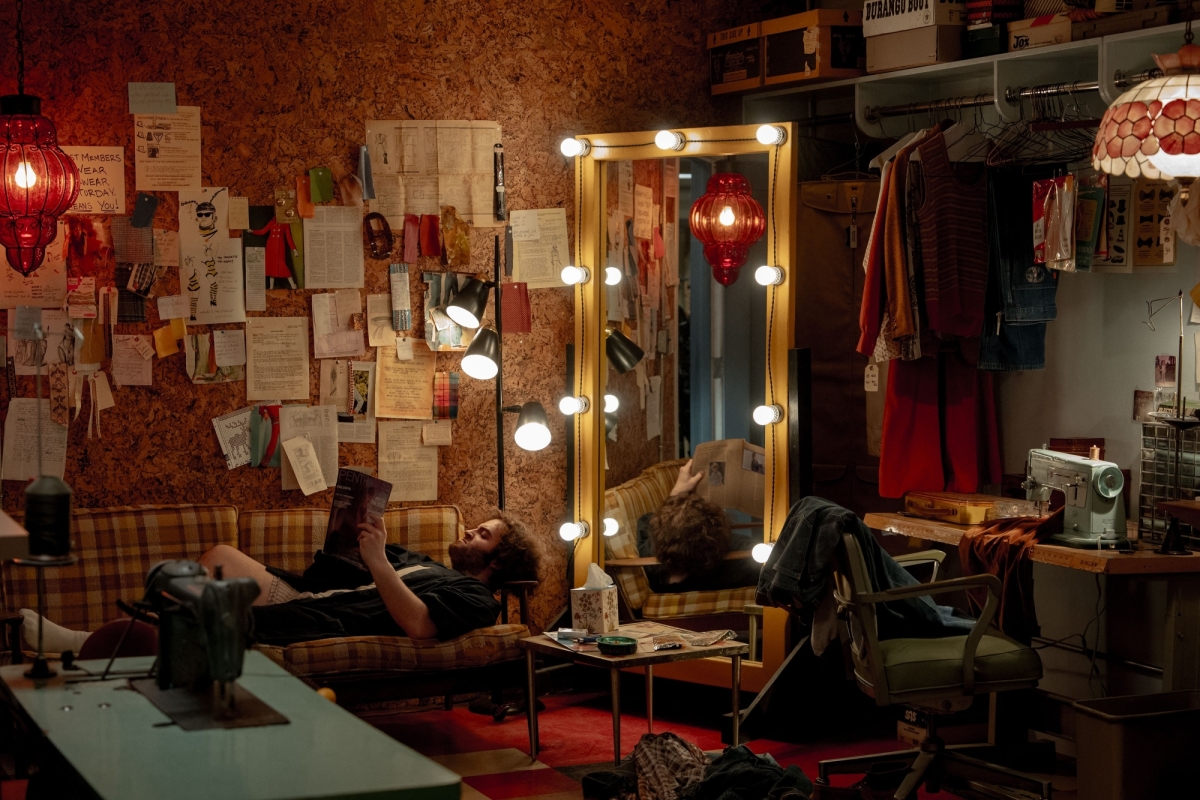
Jim Belushi (Matt Wood) in SATURDAY NIGHT, directed by Jason Reitman. Photo Hopper Stone. © 2024 CTMG, Inc/Sony Pictures Entertainment. All Rights Reserved.
“While Jason and I like texture in the image, we felt KODAK VISION3 500T 7219 would have proven a little too grainy for the different settings in this production. The 200T had just the right feeling of texture and contrast for us, and I knew I could expose appropriately for it by boosting the levels of light when needed.”
Steelberg says he enjoyed the challenge of shooting on 16mm. “When you shoot on film, you have got to use your light meter and trust your eyes. The cool thing about shooting with 16mm 200T at T2.8 on the kind of stage settings we had, is that there was little or no spill light. Unless something was lit, it would not register on the negative. That meant that I had to make a conscious decision about lighting the things we wanted to see or express in the image.
“With this beautiful subtlety film becomes way more painterly than digital. As the DP, it's really satisfying to know that you are in control of every single part of that frame – the intensity of a color, how the light falls off a face or an object in background, and the depth of a shadow.”
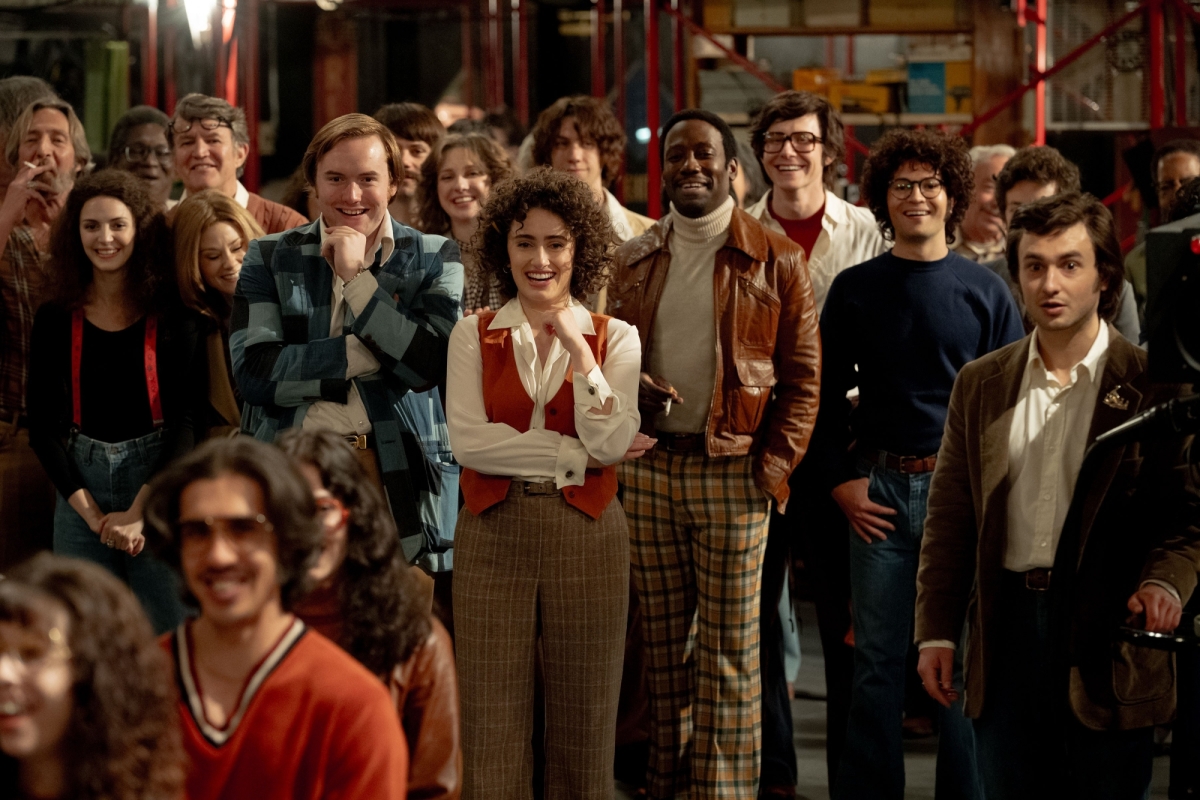
Gilda Radner (Ella Hunt), Jane Curtain (Kim Matula), Dick Ebersol (Cooper Hoffman), Rosie Shuster (Rachel Sennott), Garrett Morris (Lamorne Morris), Alan Zweibel (Josh Brener) and Lorne Michaels (Gabriel LaBelle) in SATURDAY NIGHT, directed by Jason Reitman. Photo Hopper Stone. © 2024 CTMG, Inc/Sony Pictures Entertainment. All Rights Reserved.
The DP also remarks that shooting on 16mm film, especially the long takes, meant every member of the cast and crew necessarily had to be on their A-game.
“On the very first day of the shoot we filmed that long, looping opening shot where we meet all the characters, as the action moves from out of the elevator, through the hallways and dressing rooms, and into the main studio.
“Jason's thought was by doing that, it would set the tone for the rest of the production, and that everybody would know exactly the movie we were making right off the bat. Every single person in the entire film crew was involved in that shot in some way, focused and paying attention, and we quickly fell into operating like a well-oiled machine.”
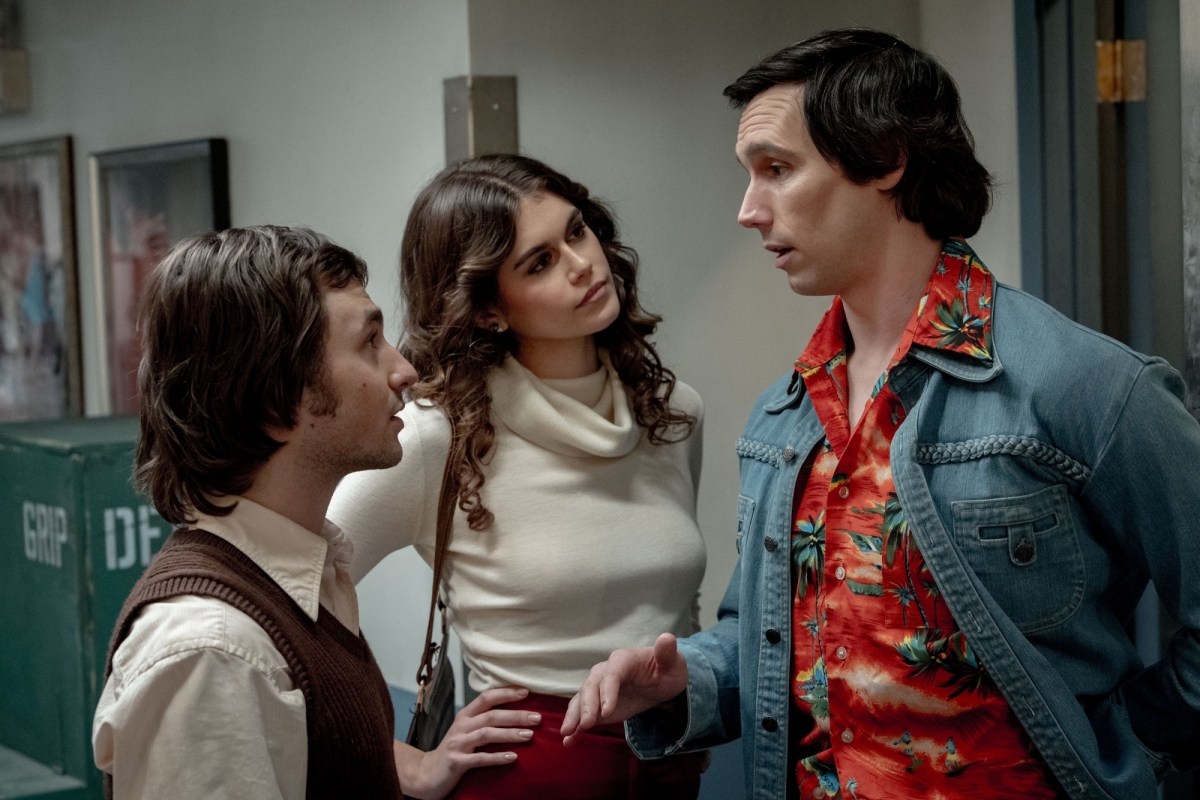
Lorne Michaels (Gabriel LaBelle), Jacqueline Carlin (Kaia Gerber), Chevy Chase (Cory Michael Smith) in SATURDAY NIGHT, directed by Jason Reitman. Photo Hopper Stone. © 2024 CTMG, Inc/Sony Pictures Entertainment. All Rights Reserved.
Apart from a small number of Steadicam shots along certain hallways and up stairwells, most of the camerawork was done from the dolly with a remote head. During production, Matthew Moriarty operated A-camera/Steadicam, with Cale Finot on B-camera, supported respectively by Sebastian Vega and Pat Sokley as 1st ACs. Brandon Cundiff led the gip team, with Daniel Riffell ISCL working as the gaffer and Scott Barnes ICLS as the chief lighting programmer.
“During pre-production Jason and I photo boarded and blocked the entire movie, so we knew in advance about the exact choreography of the camera with the actors,” Steelberg recounts. “During that period, we also lit our Studio 8H soundstage – mainly using period practicals, plus incandescents and Tungsten fixtures on a lighting grid, with some LEDs overhead in the hallways – so that we could move anywhere at any time during production and not have to spend time lighting any shots.
“Lighting the whole movie beforehand was definitely a new thing for me, and because the lighting was built-in and pre-determined, we often had to move the actors to where we wanted the camera to be or where the light was. The only filtration we had was diffusion, a Tiffen 1/8 Black Pearlescent on the whole movie, to get the right amount of bloom on the practicals, but without softening the image.”
Steelberg says, “My most enjoyable experiences have been when shooting on film. I love the discipline that comes with it, and the sense of accomplishing a well-shot film gives you so much satisfaction as an artist and a storyteller.
“This production was so different to anything that Jason and I had ever done before, and while everyday was stressful, we harnessed the stress and created something that we're super satisfied with.”